CES 2007 Part I: Convergence Happened and the Most Impressive Demo of CES
by Anand Lal Shimpi on January 11, 2007 6:53 PM EST- Posted in
- Displays
Side Show in Action
ASUS and LG were two companies that had Windows Side Show enabled notebooks up and running at the show. Side Show encompasses an integrated or removable device in your notebook that can play music, access email and display other information while your notebook lid is closed.
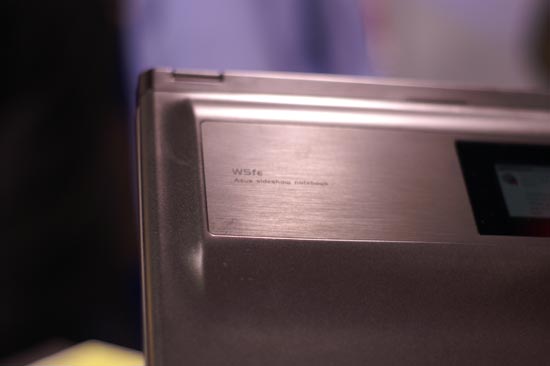
The ASUS Side Show device features an integrated 1GB of Flash memory to store music and pictures that you want accessible while your notebook lid is closed. Unfortunately you need to first sync your songs and pictures to the Side Show device before you can access them using Side Show. We would rather have something that could access the notebook's integrated drive, but without such functionality Side Show will have limited use.
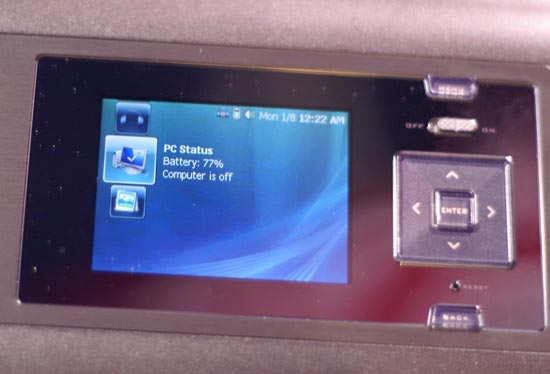


Side Show supports Windows Vista Gadgets that can be used to display various bits of information while your system is powered down. You can even read downloaded emails on the display, which actually worked reasonably well thanks to a quick interface.
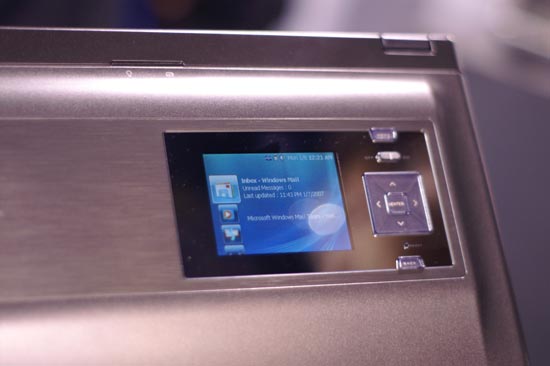
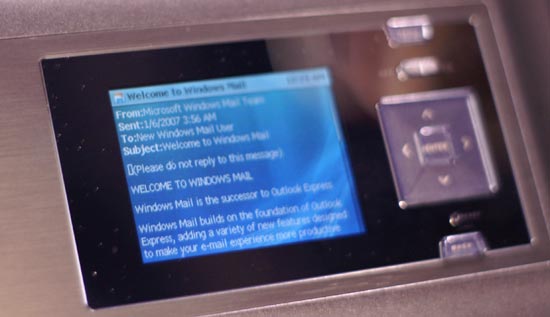
The Side Show device appears as a portable device under Vista, and you can configure what Gadgets are available for use on the device within Windows.
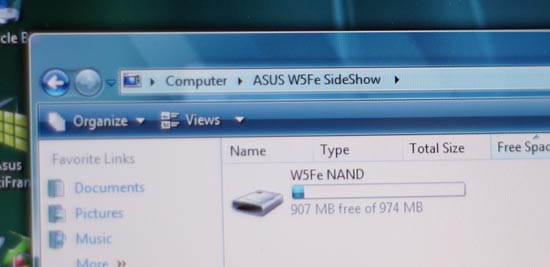
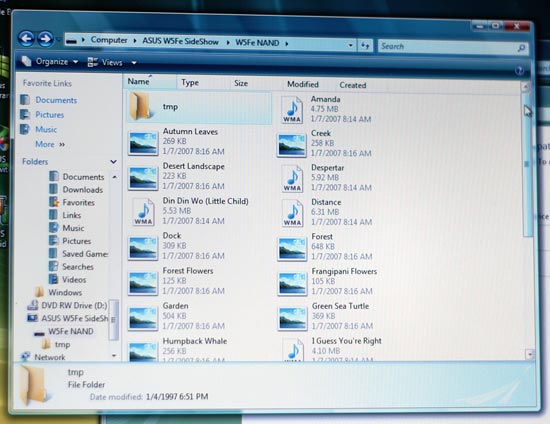
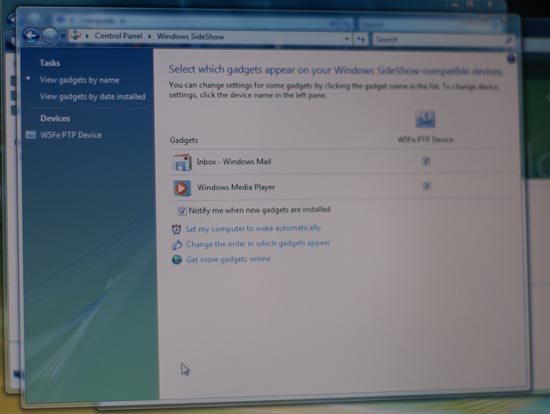










18 Comments
View All Comments
Johnmcl7 - Friday, January 12, 2007 - link
Can't say I agree with that, while LCDs are thin and light their image quality leaves a lot to be desired especially given the superior image quality of the CRTs they've effectively replaced.John
PrinceGaz - Sunday, January 14, 2007 - link
That very much depends on the type of LCD panel used. Maybe it's because my Mitsubishi 2070SB CRT display is about four years old and isn't as good as it used to be, but the overall image quality (including colour reproduction) of my new HP LP2065 which uses an S-IPS LCD panel is just as good as it. The response-time is also sufficiently fast that their is no visible blurring of fast moving images. And the 2070SB wasn't some cheapo CRT either, it was one of the best 20" visible CRT monitors you could get.The fact that the LP2065 was just a little over half the price of the old 2070SB actually makes modern LCD displays seem superior to CRTs, especially when the lower power consumption is factored in. It is also slightly (ahem!) less bulky and heavy than the old CRT monitor. It makes me wish I'd switched to an LCD sooner except of course that even a year or two ago, the picture quality of the best LCD panels wasn't anywhere near what it is today.
Give a *good* (in other words one that does not use a TN panel) LCD display a chance and you'll probably be surprised.
msva124 - Monday, January 15, 2007 - link
Does it scale well to different resolutions? I.E. for gaming.tumbleweed - Thursday, January 11, 2007 - link
"the display is superb, making it very similar to reading pages in a regular book"Hardly. It's dark grey on light grey, thus having less than stellar contrast. No, this really isn't similar to reading a regular book; it's similar to reading an ATM receipt. Once they get it to the point of true blank on something resembling white, then we can talk. Other than that, I'll admit it's nifty, but the display quality ain't there yet.
msva124 - Thursday, January 11, 2007 - link
OMG! It's almost as good as one as those CRT things that Nostradamus said would be here in the year 3000!GhandiInstinct - Thursday, January 11, 2007 - link
I AM SOLD ON OLED!!!!! Come get me!BladeVenom - Friday, January 12, 2007 - link
Last time I checked, OLED displays had a very short lifespan. That may be OK if you don't use it much, or like replacing your monitor every year, but I think many will have a problem with that.psychobriggsy - Friday, January 12, 2007 - link
They've even got blues up to >30k hours now. That's a lot of TV watching, although some people sure do like to watch TV all day.Anyway, I'm sure I read that these Sony displays used a single colour OLED throughout, with colour filters on top. White OLEDs can have very long lives. If they're using 100k hour OLEDs, and you have the TV on for 10 hours a day because you cannot bear the idea of not having it on, then that is 30 years before the display is ~half as bright as originally. I think that predicting television display technology in 2037 will be quite difficult.
I'm just hoping that one day OLEDs will actually really be available in large displays! Can't wait yet another 5 years...